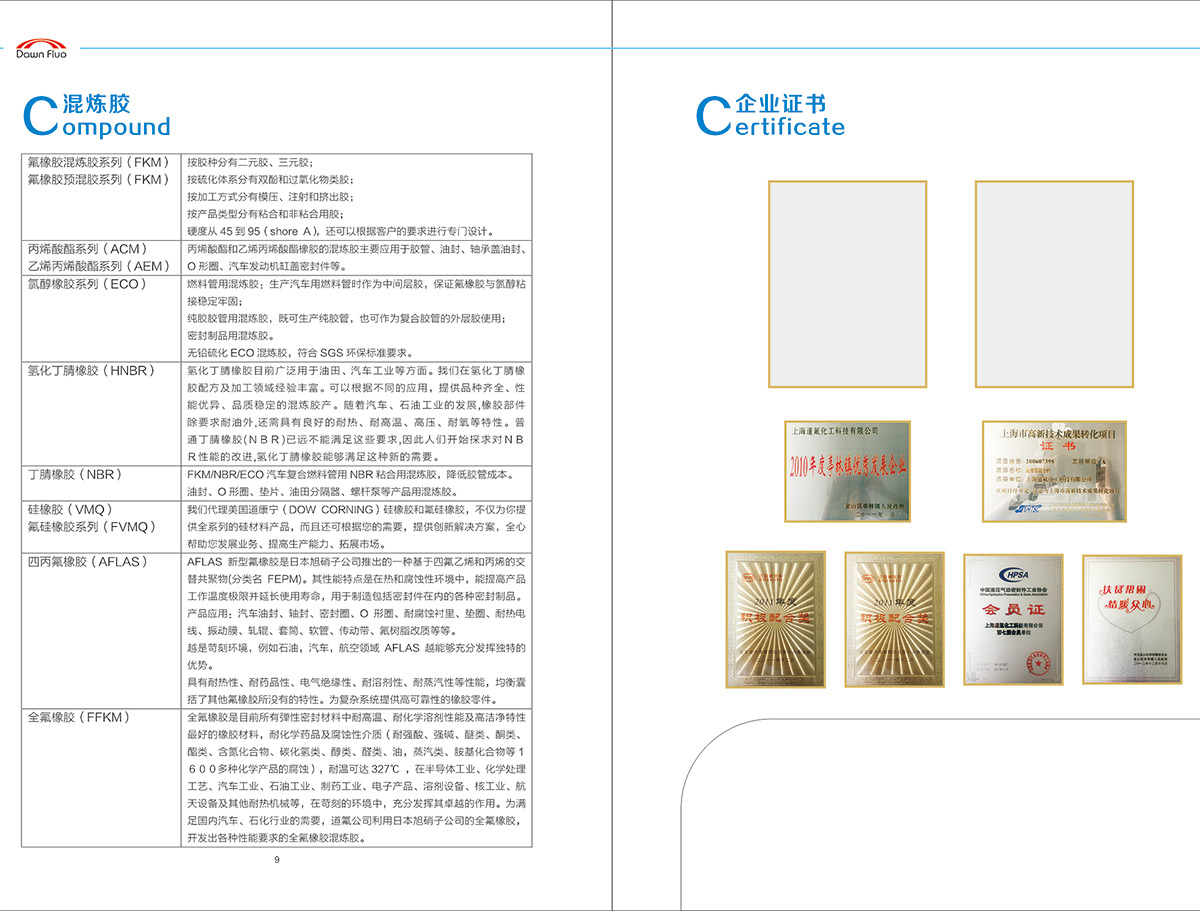
- 产品介绍
Nitrile rubber (NBR) is a copolymer of acrylonitrile and butadiene, which has excellent resistance to petroleum and non-polar solvents, as well as good mechanical properties. The specific performance mainly depends on the content of acrylonitrile components in it. Those with a acrylonitrile content higher than 50% have strong resistance to mineral oil and fuel, but their elasticity and permanent compression deformation deteriorate at low temperatures. Low acrylonitrile butadiene rubber has good low-temperature resistance, but reduces its oil resistance at high temperatures.
Temperature range: -25~100 ℃
Advantages:
&Middot; Good oil, water, solvent, and high-pressure oil resistance characteristics
&Middot; Good compression resistance, wear resistance, and tensile properties
&Middot; Rubber parts used for making fuel tanks and lubricating oil tanks
&Middot; Used for petroleum based hydraulic oils, gasoline, water, silicone grease, silicone oil, diester based lubricants, and ethylene glycol based lubricants
Rubber parts used in fluid media such as hydraulic oil
Disadvantages:
&Middot; Not suitable for use in polar solvents such as ketones, ozone, nitrohydrocarbons, MEK, and chloroform
&Middot; Not resistant to ozone, weather, and heat air aging
Applicable medium:
&Middot; Fatty hydrocarbons (butane, propane), engine oil, fuel, vegetable oil, mineral oil
&Middot; HFA, HFB, HFC hydraulic oil
&Middot; Low concentration acids, alkalis, and salts at room temperature
&Middot; water
Unsuitable media:
&Middot; High aromatic hydrocarbon content fuel
&Middot; Aromatic hydrocarbons (benzene)
&Middot; Chlorohydrocarbons (trichloroethane)
&Middot; Polar solvents (ketone, acetone, acetic acid, ether)
&Middot; strong acid
&Middot; Ethylene glycol based brake oil


 WeChat official account
WeChat official account
